Love your customers? We know we do. But do your customers love your service? In fact, is your service design fit for them at all?
Most companies go about service design all wrong–that’s why most companies don’t have great customer service. However, just a dash of simple strategy and a dollop of the right tech can make any bland customer service into a scrumptious spicy sauce that will get your customers coming back for seconds.
Here’s the secret: by adding behind-the-scenes apps to streamline your internal processes, your customers will get a five-star experience every time.
What is Service Design?
Designers always say that UI and UX design are all about the customer, but service design is quite literally all about the customer.
Service design is all about optimizing your organization to give better service. It runs counter to the misconception that service is only as good as your representatives. Instead, service design focuses on how you can change your internal processes to improve the user journey.
It’s similar to a play. When an audience watches a play, they only see whatever is on stage. However, the show can’t go on without tons of people backstage controlling the lights, the props, the curtains, and more.
However, customer service isn’t just any play; it’s a massive opera. If you don’t nail down how things work backstage, the entire performance will fall apart.
Yikes!
Service Design Done Right
But if your service can still fail with best-in-class representatives, what can you do to design your services as well as possible?
The short answer is that you need to build internal processes around the customer. But there isn’t a set way to do that. Many different companies use many different approaches. Here are some of the best and what they do:
Dutch Bros Coffee
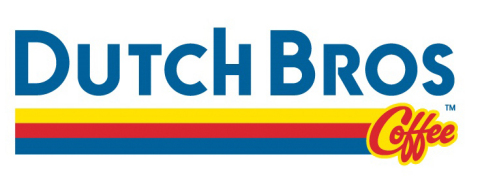
Even if you’ve never been to Dutch Bros, you’ve probably seen those tiny blue-roofed buildings blasting music with a line of cars stretching two blocks. In each car, a viciously-loyal customer waits anxiously for their daily dose of sugar-coffee.
The coffee chain’s ridiculous popularity wouldn’t be possible without expert service design and employment standards. Forbes explains how Dutch Bros builds such good customer service. They explain, Dutch Bros., based in Grants Pass, Ore., hires and promotes only outgoing optimists committed to customer service.
However, that can’t be all. Maintaining hiring standards across a franchise is very difficult. So Dutch Bros has another secret: ever since 2008, it has only soldfranchises to people who have worked at the company for at least three years. After such a long time, employees have almost certainly absorbed the Dutch Bros optimist culture. And if the franchise owners are unreasonably optimistic, they will likely treat their employees with the same over-the-top friendliness.
The company focuses on making its staff as happy as can be. As a result, this friendliness passes off to the customer.
Shopify

Shopify stands out in a different way. Instead of hiring the friendliest possible customer service agents, Shopify streamlined its internal processes. Chris Wilson, Shopify’s Director of Technical Support, elaborates on how the company decided they needed Zendesk.
Support is the hub, the central tool we connect everything to. And as we grow and scale, there’s a push to continue to centralize and to ensure that when agents log into Support, everything is there.
By implementing specific software to streamline services, Shopify made customer service much easier and much less tedious. That internal streamline immediately paid off for both the employees and the customers. The case study continues:
The end result benefitted everyone, as merchants no longer had to be transferred to another person or moved to another channel of support.
Noticing a pattern? If you treat employees well, they will treat customers well, too. Make each employee’s job easier, not harder.
Chewy

In the word of customer service, Chewy is the top dog.
Chewy, an eCommerce store for pet products, is famous for its above-and-beyond customer service. Agents send customers hand-written postcards, paintings of their pets, and other fun gifts. But more importantly, agents are friendly to the customers.
Kelli Durkin, Chewy’s VP of Customer Service, reveals Chewy’s customer service secret in an interview with Forbes.
New agents learn the systems, but we also teach them how to make decisions, rather than relying on scripts. We teach them how to problem solve.
By focusing on the employee, Chewy has developed what is arguably the best-designed customer service in all of eCommerce–that’s an impressive feat. However, they don’t stop at customer service. Chewy leverages its strong customer service department to improve its internal processes. Durkin explains how in the same interview:
We’ve built operational processes to collaborate with agents. If multiple agents hear the same ask or need, it gets bubbled up. For example, we received feedback regarding in-app shipping. We then made changes to the auto-ship feature so it’s easier to use.
This astoundingly strong inter-department process design pays off. Chewy boasts fiercely loyal customers and superbly streamlined internal processes–it’s no wonder Chewy sold to PetSmart for a whopping $3.35 billion in 2017.
Chewy–like Dutch Bros and Shopify–invests heavily in service design. But what are these big brands doing that no one else is?
What Do These Companies Have in Common?
Each company operates differently, but all three operate with service at the center. When you analyze what they have in common, an overarching service design strategy emerges.
This strategy can be described as six principles, as listed in the book This Is Service Design Doing: Applying Service Design Thinking in the Real World. The service design principles go as follows:
1) Human-Centered
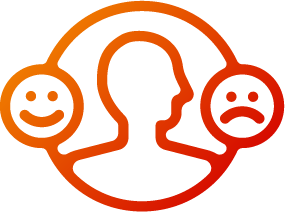
In all of these examples, people are at the center of the process. Each step considers how both customers and employees behave. As a result, processes are streamlined and stress-free.
Dutch Bros, for instance, is very human-centered. Instead of fighting the human desire to have fun, Dutch Bros uses it to their advantage. Many locations allow employees to play music and give free drinks to friends, which makes both employees and customers happier.
2) Collaborative

Everyone is part of the service design process–not just the managers. Departments talk to one another, share data, and brainstorm improvements together.
Chewy is especially collaborative. Customers service agents share customer service feedback with UX designers and management, which makes the apps more customer-friendly and the processes more efficient.
3) Iterative

Changes don’t happen all at once. Instead of making huge, sweeping changes, teams make tiny tweaks as they go.
Shopify is the perfect example of iterative service design. As their customers asked more questions, Shopify gradually tested new sales strategies and shifted services as appropriate.
4) Sequential

No service is a single spontaneous event; it’s a string of multiple decisions over time. Thus, every well-designed service should be divided into a sequence of distinct steps, which align with the customer’s journey.
Sequential design is very visible in apps, such as ZINKN. Good designers always map the user journey on a process flowchart before building the UX. Read more about Fyresite’s UI/UX design process.
5) Real
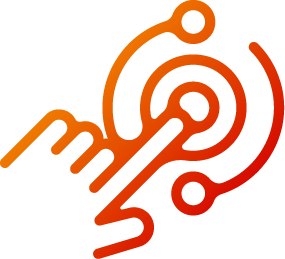
Services go away, but goods stay forever. Well-designed services will bridge the gap between “goods” and “services” by adding real, tangible items.
Chewy, again, exemplifies this principle very well. The company sends cards on holidays, hand-written postcards when you join, hand-painted portraits of your pet when you send a photo, and flowers if your pet passes away. These tangible items help customers remember the great service they received.
6) Holistic
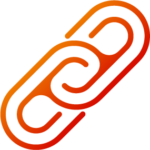
Every single part of the service is important, not just the part where you get paid. Well-designed services will refine every piece of the process.
Airlines are especially good at holistic service design. JetBlue makes every part of the journey as comfortable as possible. Not only does JetBlue provide the most legroom, but it also responds to customer concerns on twitter within minutes.
These principles are easier said than done. They can also get pretty pricey if you aren’t careful. For the highest ROI, you’ll need to get strategic.
Service Design Strategy With Web Apps
Wait–web apps? What do web apps have to do with service design?
Web apps are very good at streamlining internal processes, which saves money and makes your employee’s lives easier. If you introduce useful, user-friendly web apps, your employees will work better–and your customers will notice.
In other words, streamlining internal processes improves your service design.
Chewy streamlined their processes. Shopify did, too, and Shopify used specific software.
Okay, if you’re still not convinced, let’s walk through some of those principles of service design and see how internal apps makes them better.
How Web Apps Improve Service Design
Remember the defining factors of fantastic service design? Strategic web apps make them all better. Here’s how:
Human-Centered

Clunky process changes are annoying, especially when they’re written based on KPIs instead of human behavior. Think about all those times you’ve called customer service only to be transferred to another department who needs your information again: those processes neglect human behavior. However, apps are built around process flowcharts. UX research is the lifeblood of the app, so your employees will be able to do the job better. Thus, internal apps make your services more human-centered.
Collaborative

The app developers should weigh the experience of everyone using the app, which means that each employee will be considered in the design process. Since customer-facing employees are the ones that most directly impact the service, they will have very valuable insight for new app features.
Iterative

Apps are almost always iterative. They start out as a minimum viable product, or an MVP, and gradually gain new features over time. That way, customer-facing employees aren’t overwhelmed by sweeping service design changes.
Sequential

Services have distinct steps. So do apps. It’s a match made in heaven.
Real

Graphics, designs, and UI elements can give powerful visuals to otherwise abstract steps in a process. A swiping motion or illustrated button can build new associations with a part of a process. That change will make the process easier on your employees.
Holistic

This is the most important improvement: if you build a web app to cover any process–even one that the customers don’t see–you will impact the service as a whole.
Each point of service design improves when you build an app to streamline an internal process–even if the app is for employees that customers don’t see. By making things run more smoothly behind the scenes, you’re making your services better in every way.
If you still disagree, let’s watch a service design app in action:
Service Design Web Apps In Action
Need proof that internal apps make service design better? We’ve got you covered.

One of our recent projects was building an app for Flaggerade, A Smart Work Zone Company. They provide a valuable service to customers: setting up and maintaining work zones. This service is honed down to a science. Most notably, their flagship product, the Automated Flagger Assistance Device (AFAD), makes work zones efficient, fast, reliable, and safe. But even with this state-of-the-art technology, Flaggerrade saw that their services could be even better. After all, the internal logistics processes weren’t perfect.
To improve Flaggerade’s schedule process, Fyresite developed a robust logistics utilization app. Above all, we had a simple, yet effective goal: to make an unclear process simple again. For that, we went back to the basics and explored what makes a good schedule process. Then, we took our findings to Flaggerade in the form of a process flowchart. Together, we developed a detailed spec sheet that focused on the worker.
To meet the goals set in this spec sheet, we put flexibility first. If workers don’t have to worry about the nitty-gritty schedule details, they can focus more on their jobs. The best way to meet that goal was with worker-friendly features and a quick dash of automation.
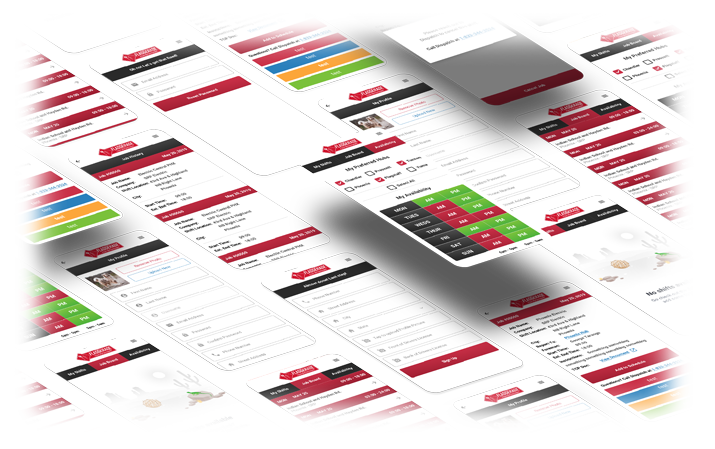
The Final Result
Workers can enter their availability and preferred locations to find shifts that work best for them. Then, they can add and drop shifts right through the app. But the biggest upside comes from automation. Contractors get automatic alerts related to their shifts. Then, all the shift data automatically imports into the admin dashboard. That way, no one needs to fret about schedules, shifts, or other logistics.
Okay, but how did the app impact Flaggerade’s service design? After all, their customer-facing services didn’t change at all.
Improving internal scheduling with a brand new Flaggerade App helped the workers get their job done faster and more efficiently. Those gains all paid off.
So if Flaggerade could improve their already-excellent service by simply adding an internal web app, what’s stopping you?
Service Design Starting Points
Okay, building an app is a lot of work. But don’t worry! There are plenty of ways to use applications to clean up your company’s backstage work. Any one of these will make the behind-the-scenes operations much smoother, which will really help your customer. Here are a few suggestions:
Time Tracking Apps
Tracking hours by hand can become messy very quickly. Sometimes, employees forget to log hours. Other times, they leave out information. But the process itself is crucial for staying on budget and on-scope. Time tracking is error-prone, but important–that makes it a perfect candidate for redesign.
There are lots of partially-automated and fully-automated time tracking apps to choose from. ClickTime provides automatic reminders to log hours. To streamline time tracking, it syncs with your calendar and email to automatically log meetings, events, and breaks. And if an employee repeats tasks each week, they can set ClickTime to log it for them.
Another useful automated time tracking app is Timely. This software automates the entire time tracking process in full. When you turn on the software, it tracks tasks and enters them into a timesheet for you. All you have to do is review and submit at the end of the day.
Both apps are wonderful, and a custom solution may work even more effectively. No matter what option you choose for your business, a time-tracking app can be a great way to kick off your service design journey.
Process Tracking Programs
Time tracking is crucial, but process tracking is just as important to your productivity. Even if your company has a culture of strong communication, it’s hard to keep track of each project’s status. A few small delays, bottlenecks, and barriers can hang up even the most communicative team. Every business must keep even the most ill-informed employee in the loop at all times.
Automatic process tracking offers a simple, yet strong solution. All you need to do is select some KPIs and use them to evaluate your business processes. Large enterprises may choose Creatio, which collects and analyzes process data. It cuts down repetitive work, manages information, and saves your team time and money. That makes it an especially elegant solution.
A useful app for big and small companies alike is Kissflow. This platform monitors data to identify areas of improvement. Then, it models easy-to-execute, repeatable solutions. Kissflow’s drag-and-drop UX makes business process tracking effortless for both you and your team. The results speak for themselves: the status of each project becomes much more transparent and work gets done faster.
Process tracking is especially important for large companies with multiple departments. Nothing annoys a customer more than
Rental Tracking Apps
Whether rentals are the core of your business or you just want to squeeze a few extra bucks out of idle assets, rental tracking apps may be right for you. Spreadsheets won’t cut it. They’re prone to lots of human error. But guessing pricing, time, and other details could put your valuable time or items at risk. Lucky for you, automated rental tracking is simple and effective. Apps like EZRentOut track time, alert customers, and enter all that data into forms. That way, human error is a thing of the past.
Similarly,TrackAbout keeps an eye on materials and items. And when an item is due for a tune-up, it lets you know. Plus, it tracks an item’s entire rental history. These features make rental management simpler. Improve your productivity by letting an app track rental details for you.
Automated 3rd Party Integrations
With a mobile or web app, your team can orchestrate business processes together. Thus, your team will spend less time integrating software and more time using it.
One app that automates third-party integration is ConnectWise Automate. This app does all the tedious work for you. It patches, documents, and bills third-party applications as you go. That way, you don’t even have to think about integration. But the biggest boon is time-saving. With ConnectWise, your team no longer needs to worry about time-consuming tasks. And since it follows best practices, you can rest assured that your system works as well as possible.
Similarly, using apps to automate parts of your middleware will help you manage your environments better. Orca automatically compares middleware settings, configurations, and compliance issues.
With this easy-to-use app, your team can deploy or rollback changes to thousands of servers without even thinking about it. Since your team will spend less time on integrations, productivity will go up.
Business Automation Apps
Perhaps it’s the day-to-day processes that need to change. In that case, your company may benefit from a smaller, but more versatile app with event-triggered operations.
One such application is Zapier, which follows predefined rules when an event occurs. For example, did you publish a new blog post? Zapier will email customers and post a link on social media. Did someone respond to a Facebook post? Zapier can follow up for you.
However, more specialized solutions may be useful, too. Xero exclusively automates your accounting workflows. Some of its tools include automatic invoices and scheduled bill payments. Since it integrates with Gusto and other third party software, Xero takes the stress out of repeatable, error-prone accounting processes. While this app alone will not solve every problem, it will make your company more productive when paired with other hyper-specific automation apps.
Custom Solutions
Most companies–especially large enterprises–have lots of very specific processes that don’t translate well into existing apps. These companies would benefit the most from custom apps.
We’ve already seen how a custom app helped Flaggerade streamline its internal processes, but they aren’t alone. Companies across the planet benefit from custom internal apps. The list would be too long to fit in this article alone.
Service Design with Web Apps: Is It Worth It?
Yes. Yes, it’s worth it.
Remember: you can’t put on a good play if your backstage crew is tripping on their shoelaces. Get your internal processes down to a science. And what better way is there to clean up those processes than with well-designed web apps?
Lucky for you, we happen to build web apps. Give us a shout online to see what we can do for you.
 Reed Steiner
Reed Steiner 






